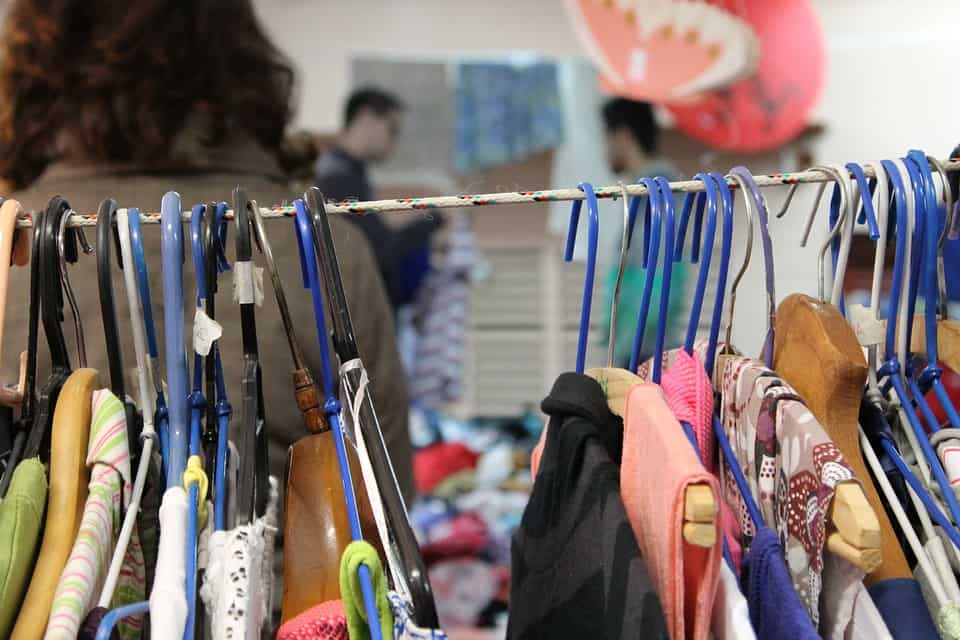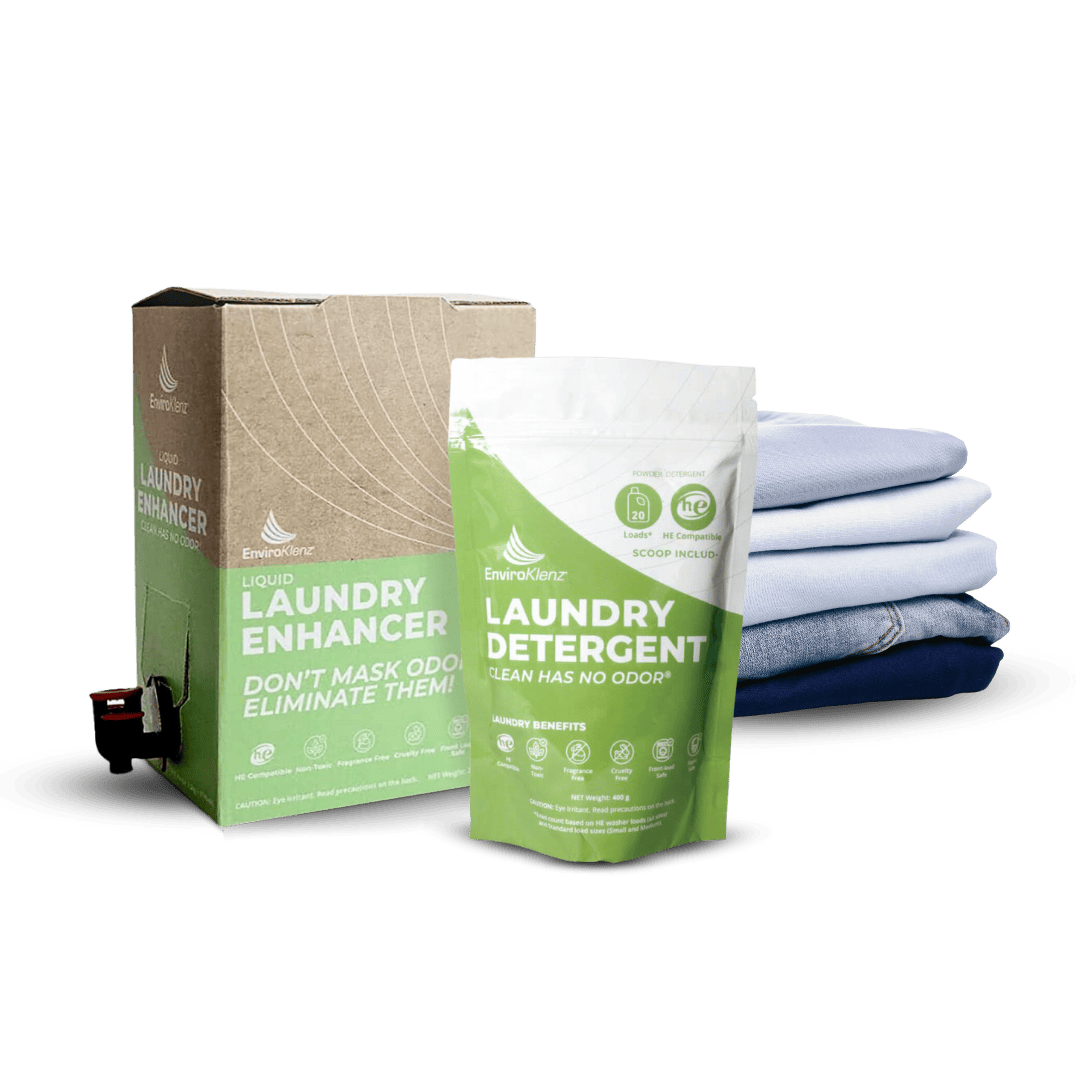Second-hand or thrift clothes usually offer amazing bargains. But besides being inexpensive, they are environmentally friendly, making thrift shopping a great option for environmentally conscious people interested in sustainable and eco-friendly items.
Notwithstanding all the positives, clothes purchased at flea markets, garage sales, thrift shops, or second-hand stores have a signature, often unpleasant smell. Not to worry, though, as this article will explain how to wash thrift store thrifted clothes and remove the unpleasant thrift store smell.
How to Wash Thrifted Clothes
Whether or not your thrift clothes smell musty, washing them properly before wearing or storing them in your closet is important.
By definition, thrift or second hand clothing items are pre-owned, meaning they are old clothes worn by someone else, even if they appear to be new clothes. For this reason, it makes sense to sanitize your new find to remove potentially harmful microorganisms that may tag along in your thrifted item.
Here’s how to wash thrift clothes, even if they smell nice or look new.
1. Read the Care Label
First, check the tag on the clothing for care instructions before putting them in water or the washing machine.
Among other things, the care label tells you:
- The fiber content of the fabric
- The type of wash (machine wash, handwash, or dry cleaning)
- The recommended water temperature for washing
- Whether you can use bleach for the fabric
- How to dry the cloth
Avoid cleaning thrift clothes labeled “dry clean only” in a washing machine. Do not hand wash them, either. Instead, send them to a professional dry cleaner. However, clothes labeled “dry cleaning recommended” can be hand wash at home.
It is usually best to stick with hand washing if the care instructions are missing or illegible. That said, suit jackets and other structured items should be handled by a dry cleaner, whether or not you find the care label.
Remember to wash clothes with different colors separately, especially during first-time washing. This way, you will avoid color bleeding that can damage fabrics if dye leaches out from some clothing items.
2. Hand Wash the Clothes
While machine washing is more convenient, many thrift clothes are generally fragile with delicate fabric. For this reason, handwashing second hand clothing is usually the safest way to clean your items, particularly for the first time.
To handwash your second-hand clothing items and clean thrifted clothes:
- Fill a basin with warm water or the recommended water temperature on the care label
- Add natural, eco-friendly detergent or mild soap
- Soak the clothes for a few minutes
- Wash the clothes, gently massaging them for a deep clean
- Thoroughly rinse the clothes and hang them outside to dry
Unless the care instruction says otherwise, it is usually best not to dry second-hand clothes using a dryer or tumble drying. This is especially true if the care label says, “do not tumble dry.”
Generally, air-drying is gentle on a wide range of fabrics, reducing lint production and extending the cloth’s lifespan.
3. Treat Stains
Next, look for stains ― it is not uncommon to find a few nasty stains on a piece of second-hand cloth you like so much. Don’t despair or pass on a lovely item just because it is stained.
It’s easy to remove stains from clothes. All you need is a detergent with natural stain-fighting ingredients like the EnviroKlenz Laundry Detergent Powder.
We love this product because it is gentle yet effective, making it an excellent solution for treating stains on delicate thrift clothes.
How to Wash Thrift Store Clothes and Remove their Smell

Many regular detergents do a decent cleaning job, but not all work well for odor removal.
Generally, standard detergents mask unwanted laundry smells. Unfortunately, many chemicals used to cover up odors can cause skin irritations and other allergic reactions.
You want to be careful when choosing odor-removing products.
Look for safe, non-toxic products with odor-neutralizing ingredients that are gentle on fabrics. Make sure the product doesn’t contain fragrances, harmful additives, or harsh chemicals that may cause health issues.
Here’s how to wash thrifted clothes for odor removal.
1. Sort the Clothes
Start by separating clothing items by fabric type and color.
- Put deep-colored clothes like red, brown, black, and navy in one pile.
- Light-colored clothes like white, light gray, pastel, and pieces with white background prints should go in another pile.
Next, sort the different piles into heavy clothing and lighter clothing items. Remember to separate lint-producing clothes from lint-attracting pieces.
2. Clean the Clothes in a Washing Machine
Clean your second-hand clothing items using a non-toxic, odor-fighting laundry product. Remember to handwash thrift clothes for the first time before cleaning them in the washing machine to remove unwanted smells.
For high-efficient (HE) washing machines:
- Add half a scoop of the odor-fighting product to your washing machine.
- Fill the machine with the correct amount of water.
- Add the used clothes to the machine.
- Set the machine to your desired wash cycle, preferably a delicate or gentle cycle (especially if you are unsure of the care instruction).
- Rinse thoroughly to remove excess detergent. Use an extra rinse cycle if necessary.
For standard washing machines:
- Add one scoop of the odor-eliminating powder into the washing machine.
- Fill the machine with the recommended amount of water.
- Put the used clothes into the machine.
- Use an extra rinse cycle to remove excess detergent.
If you are particularly allergic to laundry detergents, read our detailed guide for tips on doing laundry without triggering your allergies.
Sanitizing Thrift Clothes
Second-hand clothes come from different parts of the world, with the United States importing most of its used clothing from Pakistan, the United Kingdom, United Aram Emirates, Thailand, and France.
As you may have guessed, the storage conditions for these clothes (both in transit and at thrift stores) are far from pristine.
Usually, washing your new find with natural enhancers or detergents should disinfect the fabric and remove stuck-on smells, bacteria, moths, and bed bugs.
However, you can add a good-quality laundry sanitizer to the load before washing to provide additional sanitation.
EnviroKlenz® Medical Disclaimer:
“Any information that is provided on this website is not for the use by any commercial or personal entity without expressed written consent of the blog author. The material and statements illustrated within this blog are not intended to diagnose, treat, cure, or prevent any diseases or medical conditions. Nor does the author in any way guarantee or validate the validity, totality, or efficacy of any claims and will therefore not be held responsible for the content of any claims. Always consult your medical physician for any specific medical advice or recommendations.”









